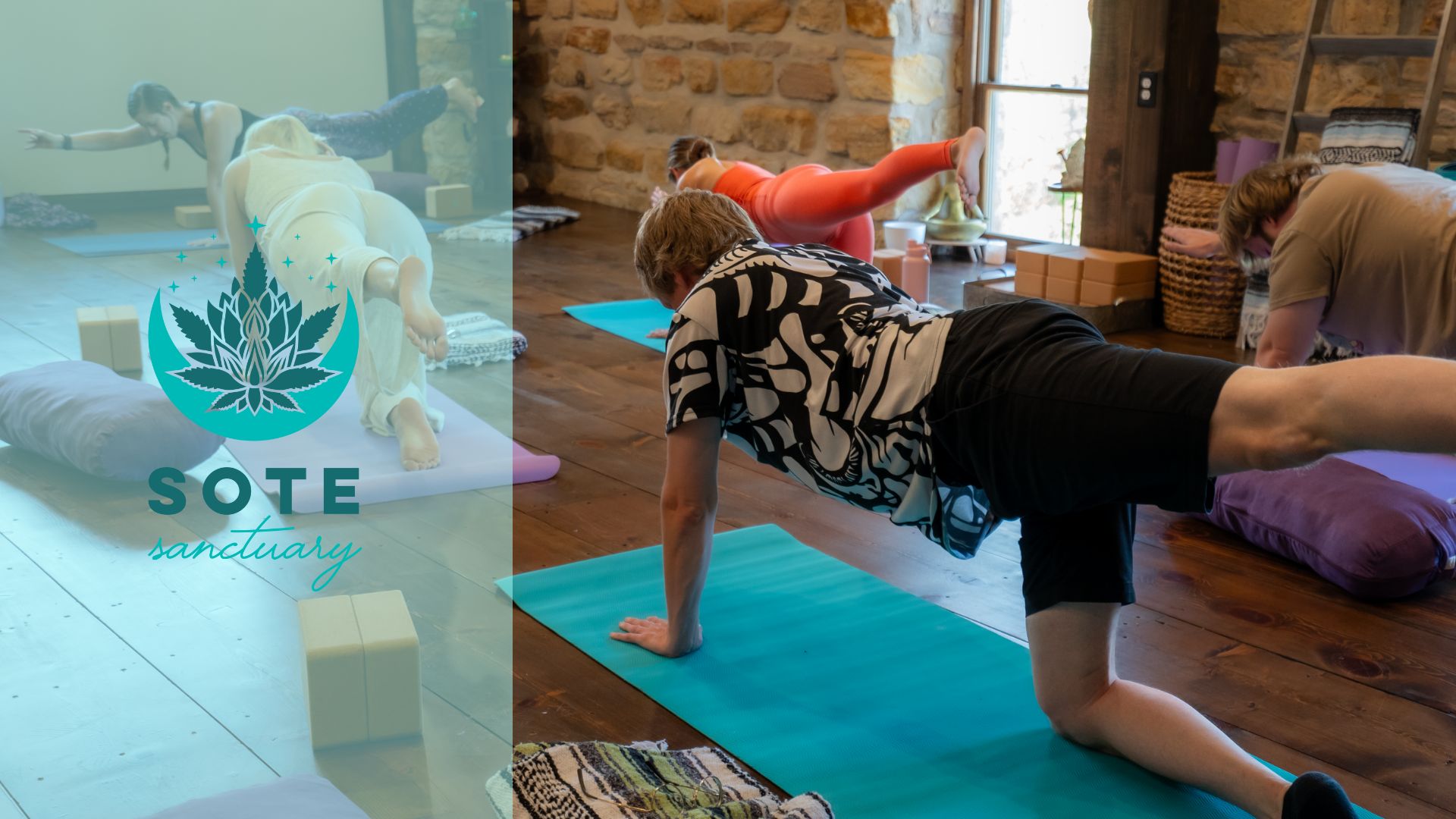Have you been thinking about trying yoga, or if you already have, incorporating it into your regular routine? Maybe you’re hesitant because you believe a common yoga myth, like that yoga isn’t really exercise or you have to be flexible to do it, or maybe you feel intimidated to walk into a studio for a class. Maybe your hesitation is because you simply want to know why you should do yoga in the first place; what are some specific results one can expect from making yoga a consistent part of your life?
In this post we’ll learn about five common benefits of a regular yoga practice, things that come naturally but gradually with consistent effort. This can be tough for those of us who crave instant gratification, and often throw in the towel when something doesn’t change our lives after two weeks. Occasional effort in yoga is beneficial, but it is consistent practice that changes and improves our lives. As you’ll see in this post however, the benefits of yoga are more than worth the effort!
Increased Strength and Flexibility
A common misconception for people who have never tried yoga is that it is not really exercise. Although it is true that there are styles of yoga that are more about stretching and relaxation, there are plenty of styles that are more physically involved. A class that involves standing and balancing poses, and flows from one pose to the next, will be a major physical workout. Styles like yin and restorative yoga will be less physical, while styles like vinyasa and hatha yoga will involve more movement and difficult holds.
Yoga provides a perfect combination of strength training and stretching that leaves your muscles fluid, stretchy, and healthy. A lot of poses involve holding up your own weight, and that is not an easy task to do. Yoga uses the built-in weights of our body to build muscle strength while simultaneously stretching them to increase flexibility and range of motion. In yoga you will utilize nearly every muscle group. Ask anyone about their first class; they’ll likely tell you it was harder than they thought!
Calmer Mind
This is the #1 reason I kept returning to yoga and ultimately, made it part of my daily life. A regular practice will quiet the mental chatter in your mind and leave you feeling more peaceful and content. So much of our lives are spent outside of the present moment. Our minds are constantly bombarded by stimuli; responsibilities, thoughts about the past, worries about the future. We miss out on what’s happening right now because we are preoccupied thinking about things meant for another time.
When we practice yoga, we are essentially forced to pay attention to what’s going on right here, right now. We need to listen to the instructor so we know which pose to do next, we need to get ourselves into the pose, adjust for comfortability, find our balance, and focus on our breath simultaneously. This is a lot for the brain to do, and it leaves little room for thinking about what we should make for dinner or worrying about an upcoming deadline. Yoga helps retrain our minds to come back to the present. A calmer mind means less anxiety and more peace.
Less Physical Pain/Inflammation
Practicing yoga can be a beneficial way to reduce pain and inflammation in the body. The combination of gentle stretching, controlled movements, and focused breathing in yoga helps to release tension and tightness in the muscles. Certain yoga poses specifically target muscle groups, allowing for a deep stretch that can help relieve muscle stiffness and promote relaxation. Additionally, the emphasis on mindfulness and being present in the moment during yoga practice can help individuals become more aware of areas of tension in their body, allowing them to consciously relax and release the muscles.
I have chronic shoulder and neck tension and pain from previously untreated scoliosis. Although it might sound like I have horribly neglectful parents, this is actually a relatively common occurrence. The curvature in my spine means that the muscles are constantly trying to compensate and balance, causing knots the size of golf balls. I see a chiropractor and get regular massages, but it is yoga that gives me daily relief. The difference in my pain level from when I practice to when I don’t is astonishing, and I have come to rely on yoga as my main source of relief.
Greater Tolerance/Compassion
Through a consistent yoga practice, we become more attuned to our interconnectedness with others and the natural world around us. As we focus on our breath and movement during yoga, we cultivate a heightened awareness of our own bodies and the space we occupy. This heightened awareness extends beyond the physical, allowing us to recognize the subtle energies that connect us to other individuals and the environment. By acknowledging our connection with others and nature, we can develop a deeper sense of empathy and understanding, leading to a more compassionate outlook on life.
The principles of yoga, such as kindness, mindfulness, and non-harming, promote compassionate behavior towards ourselves and others. As we practice self-compassion on the mat, we learn to extend that same compassion to those around us. We develop an understanding that suffering is universal, and a desire to create less of it. Yoga encourages us to approach ourselves and others with understanding, patience, and an open heart, fostering a sense of compassion that extends beyond our practice and into our daily interactions.
Improved Digestion and Regularity
Simply put, yoga gets things moving in our bodies. Other forms of exercise do this to an extent, but yoga is unique because of its incorporation of stretching, twisting, and holding our bodies in different positions. Certain yoga poses, such as twists and forward bends, can help stimulate the digestive organs, promoting better digestion and alleviating issues like bloating and discomfort. The gentle compression and stretching of the abdomen in these poses can help increase blood flow to the digestive system, aiding in the process of digestion and nutrient absorption.
Gut health is closely linked to and crucial for mental health due to the intricate connection between the gut and the brain. The gut is home to a complex ecosystem of microorganisms that play a crucial role in digestion and immune function. These microorganisms also produce the neurotransmitters serotonin and dopamine, which are essential for regulating mood and emotional well-being. Furthermore, the gut microbiota communicates with the brain through the vagus nerve and the release of signaling molecules, influencing cognitive function, emotional responses, and stress management.
–
Are you looking for a peaceful and welcoming environment to try yoga, or a studio home to deepen your existing practice? We have just what you’re looking for at SOTE Sanctuary! Whether you’re seeking physical strength, mental clarity, or emotional balance, yoga offers something for everyone. If you’re ready to experience these benefits firsthand, we invite you to join us for a rejuvenating yoga class at SOTE Sanctuary! Our experienced instructors and serene environment provide the perfect setting to embark on your yoga journey. Take the first step towards a healthier and more balanced life by attending a class at SOTE Sanctuary and discover the transformative power of yoga for yourself. We look forward to welcoming you to our community of wellness and mindfulness.









